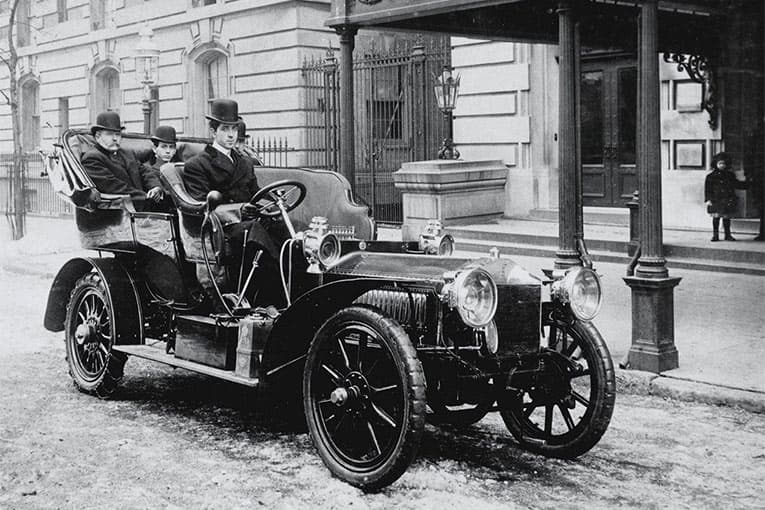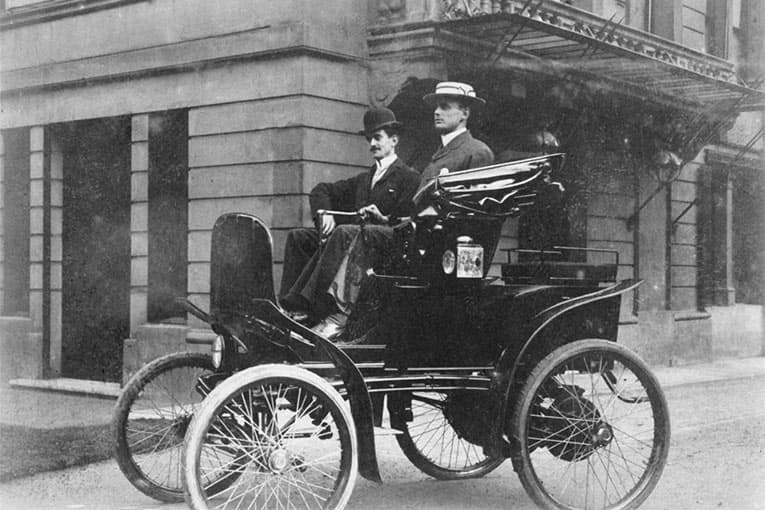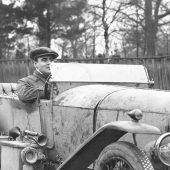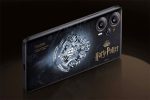
Charles Stewart Rolls was raised in aristocratic privilege. As a third son of Lord and Lady Llangattock, they lived at The Hendre, Monmouth in Wales. Charles, born in 1877, was educated at Eton and Trinity College, Cambridge where he graduated in engineering. By the time he left university he was an enthusiastic and accomplished motorist, a pioneer in a time when most people thought that motoring was just a fad that would soon pass. Charles Rolls raced with bicycles, motorcycles and cars. In 1903 he broke the World Land Speed Record in Dublin driving a 30hp Mors, but the international governing body of the time refused to acknowledge the accomplishment due to the use of unapproved timing equipment.
Charles Rolls advocated the military use of the motor vehicle and later the aircraft of which he was also a pioneer, firstly with balloons and then aeroplanes. He funded his sporting activity by running a car sales and service depot at Lillie Hall, a former roller-skating rink, in Fulham, London. Showrooms were opened in Brook Street and subsequently moved to Conduit Street. C.S. Rolls and Co. was established in 1902 and Rolls persuaded his friend, Claude Johnson, to resign as Secretary of the Automobile Club, (later to become the present RAC) and join him in his motor business. The cars they sold were virtually all imported and Rolls was frustrated and often voiced criticism at the lack of British initiative in this field.
Henry Edmunds, who was later to become known as the Godfather of Rolls-Royce, had one of the first cars Henry Royce had built. He boasted of his wonderful car to his friend, Claude Johnson, who passed on the news to Charles Rolls of a company in Cooke Street, Manchester that was producing a superb little twin-cylinder car that might be the best built in England. Rolls travelled to Manchester with Edmunds and within minutes of seeing the little 10hp Royce car, knew he had found gold. Rolls was well and truly impressed with the car. So much so that Rolls agreed to sell all the cars that Royce could build. It was also agreed that the cars would be known as Rolls-Royce Motor Cars. Rolls had always advocated multi-cylinder engines and had convinced Royce that this was the way to go. Rolls-Royce Motor Cars made its international debut in December 1904 with a stand at the Paris Salon and exhibited two, three and four cylinder cars.

In 1905, Rolls began to race a 20hp in touring car events. In the Tourist Trophy on the Isle of Man that year Rolls retired with gearbox problems but his team mate, Percy Northey, was second. Inspired by this success, Royce prepared two cars for the 1906 race. These cars had a slightly smaller wheelbase and track, the chassis was drilled to reduce weight and lighter bodies were fitted. Rolls piloted the “Light Twenty” to a comprehensive victory and the company immediately used the triumph to good effect. Rolls also undertook a series of publicity stunts, which included driving a Light Twenty from Monte Carlo to London in 37 hours 30 minutes. Rolls also raced the car in the United States, and won at Yonkers, New York, against cars of far higher capacity.
After a while, Rolls was becoming more and more interested in the new discipline of flying and less interested in motor racing. He was the first person to fly the English Channel in both directions and tragically the first Englishman to die in a flying accident. His untimely demise at the age of 32 took place at the Bournemouth air show on 12 July 1910. Although Charles Rolls was only involved with Rolls-Royce for six short years, he had brought with him Claude Johnson and also his own name as one of the best-known and popular figures of the day. As well as this, his knowledge, intellect and tremendous drive and enthusiasm played a major part in how Rolls-Royce began and the direction in which it would go.











